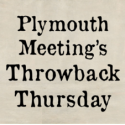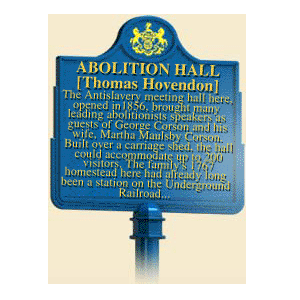If you are driving on Butler Pike in the area around the intersection with Germantown Pike you will see a marker acknowledging Plymouth Meeting’s role as a hub of abolitionists and the Underground Railroad.
An article in the Philadelphia Inquirer from 1995 provides details on how the then village of Plymouth Meeting was unique in regards to the participation of the entire community in the Underground Railroad. The article is an interview with historian Charles L. Blockson, who wrote a book about the Underground Railroad. In the article Blockson states:
The entire village was abolitionist. . . . It’s the most intact Underground Railroad village in my experience
The article goes on to share:
While Quakers were often leaders in the anti-slavery movement, Blockson says the majority were not active risk-takers. The Plymouth Meeting group was an exception.
“They took real risks,” he (Blockson) says. “There were threats to burn down Abolition Hall. There were raids by slave hunters. There are lawsuits filed in Norristown against the Corsons. I’ve read them.”
The Corsons referred to by Blockson are the families of Joseph and George Corson, who were two of the founders of the Plymouth Meeting Anti-Slavery Society. George Corson’s farm was a regular stop on the Underground Railroad and he converted a barn on his property into Abolition Hall in 1856. Abolition Hall, which seated 150 people, became a focal point of the Abolitionist community in the area and served as a venue for several famous speakers involved in the movement.
You can read about what happened to Abolition Hall after the Civil War by clicking here.


